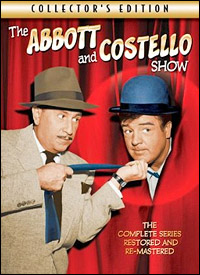*
Orpheus Descending, the 1957 drama starring Cliff Robertson and Maureen Stapleton, closed after eight weeks at the Martin Beck and has gone down in the books as lower-shelf Tennessee Williams. The film version, The Fugitive Kind [Criterion], was overlooked when it was released in 1960 but turns out to be a fine meeting of playwright/screenwriter, director (Sidney Lumet, just a couple of films past "Twelve Angry Men"), and cast. Of course, with Marlon Brando, Anna Magnani and Joanne Woodward in the leading roles you have quite a set of actors. Brando received a cool million as salary, which was quite a payday at the time. Maureen is there too, having moved from the star role of Lady Torrance (now played by Magnani) to that of Vee Talbot. The film gets to you in a way that the play, in my experience, doesn't; Brando plays that snakeskin-jacketed drifter, and you feel like you're right in there with that snakeskin.
The restored high-definition transfer comes in a double-DVD edition bearing a sticker that proclaims it is "director approved," with a facsimile signature from Lumet. Bonuses include a new interview with Lumet and — most fascinatingly — the 1957 Kraft Theatre telecast of "Three Plays by Tennessee Williams." These one-acts, which Lumet directed, were already apparently 20 years old. "The Last of My Solid Gold Watches" stars Thomas Chalmers and Gene Saks. (Yes, Gene Saks.) "This Property Is Condemned" has Zina Bethune and Martin Huston. Most watchable is "Moony's Kid Don't Cry" starring Ben Gazzara and Lee Grant. The three are introduced by Williams himself, in suit and tie, looking pretty nervous and periodically glancing up at — what? A cue card?
*
For those of us who were around 25 years ago,
Cocoon [Fox] was a bit unsettling. Put aside that it was an entertaining and provocative film, a story of senior citizens recapturing their youth. Ron Howard's movie — one of his earliest — affected younger viewers on an entirely different, but parallel, level. The cast had some of our great theatre actors — Maureen Stapleton (25 years after "The Fugitive Kind"), Jessica Tandy, Hume Cronyn, Jack Gilford, people who we grew up watching — and suddenly they were
old. Not just aging, but old. This was brought home, even moreso, by the ever youthful and vibrant Gwen Verdon. She had been the sweetest (and most brilliant) Sweet Charity 19 years earlier, and had closed
Chicago just eight years back. But now she was 60, and musical comedy fans with Lola or Anna Christie or Charity in their memory were not exactly prepared for the 60-year-old Gwen. Having seen the Cronyns, Maureen and Jack over the years, their appearance was less jarring. Seeing them up there on the screen as — no-doubt about it — senior citizens, "Cocoon" carried the message that these vibrant artists who had entertained us so often were now, officially, old. Which was in part what the movie was about. Twenty-five years later "Cocoon" is back, on Blu-ray. Commentary comes from director Howard, who had just broken through the year earlier with "Splash" but at the time was still remembered as that charmingly photogenic kid on "The Andy Griffith Show." He's approaching 60 now, too, so I suppose we go full circle. Meanwhile, this 1985 film offers a chance to see the fondly remembered Maureen, Jessie, Hume and Jack. Don Ameche, too, who won an Academy Award for his efforts. And, yes, Gwen.
Back in the days when "I Love Lucy" was just going on the air — and before "The Honeymooners" first honeymooned — burlesque comics Bud Abbott and Lou Costello starred in their own ragtag sitcom,
The Abbott and Costello Show [E1 Video]. They filmed 52 episodes over two seasons, starting back in 1952. Even as a child, you might well have realized these shows weren't too good; they were basically a variation on a very simple theme. Still they were slapstick, marginally more cultured than The Three Stooges, and a way to kill a little time in those days when you didn't have more than six or seven television channels, no cable, no Gameboy, no iPod, etc. The boys had joined together in 1935, working in burlesque at the Eltinge on 42nd Street. By 1939 they had moved to the Shubert, in the revue
The Streets of Paris. That's where Carmen Miranda, who had little to do with Paris, attained stardom with "South American Way." Bud and Lou weren't exactly Parisian either, but this was a Shubert revue so it didn't matter. The newly-minted Broadway stars were immediately snapped up by Hollywood, where they became top box office for ten years. (In 1942, we are told, they were the number one box office attraction.) Their careers more or less collapsed in 1952, hence "The Abbott and Costello Show." The complete series has now been issued in a nine-DVD set from E1 home video. All sorts of extras, too — Lou Costello home movies, anyone? — and a 44-page booklet. Who's on first, anyway?
*
We would not be covering such things as The Tooth Fairy [Fox] in this column were it not for the presence of Julie Andrews, here playing the head fairy who drafts a not-very-nice professional hockey player (Dwayne Johnson) and turns him into a tooth fairy, complete with tutu. It's all very realistic, as you can imagine. Anyway he turns into a nice fellow, as is the custom in this sort of film; my kids loved it; and these films do help keep Julie Andrews working, even if she's relegated to offering class to projects with wrestlers-turned-actors playing tooth fairies in tutus.
(Steven Suskin is author of the recently released Updated and Expanded Fourth Edition of "Show Tunes" as well as "The Sound of Broadway Music: A Book of Orchestrators and Orchestrations," "Second Act Trouble" and the "Opening Night on Broadway" books. He can be reached at [email protected].)






Matthew-Murphy.jpg)





